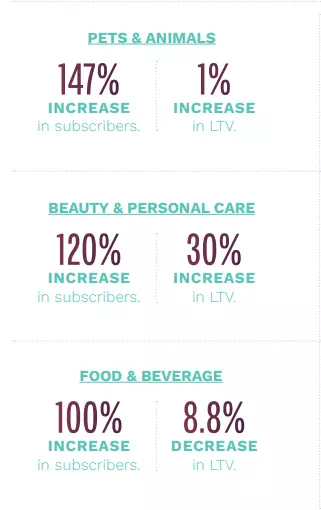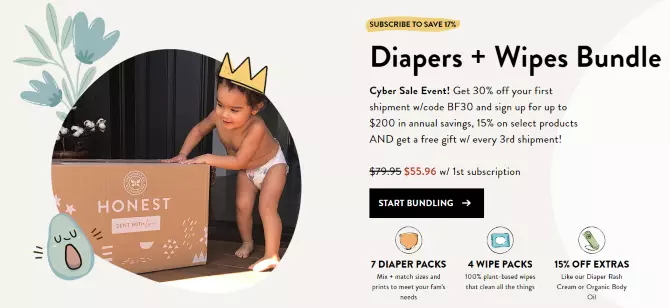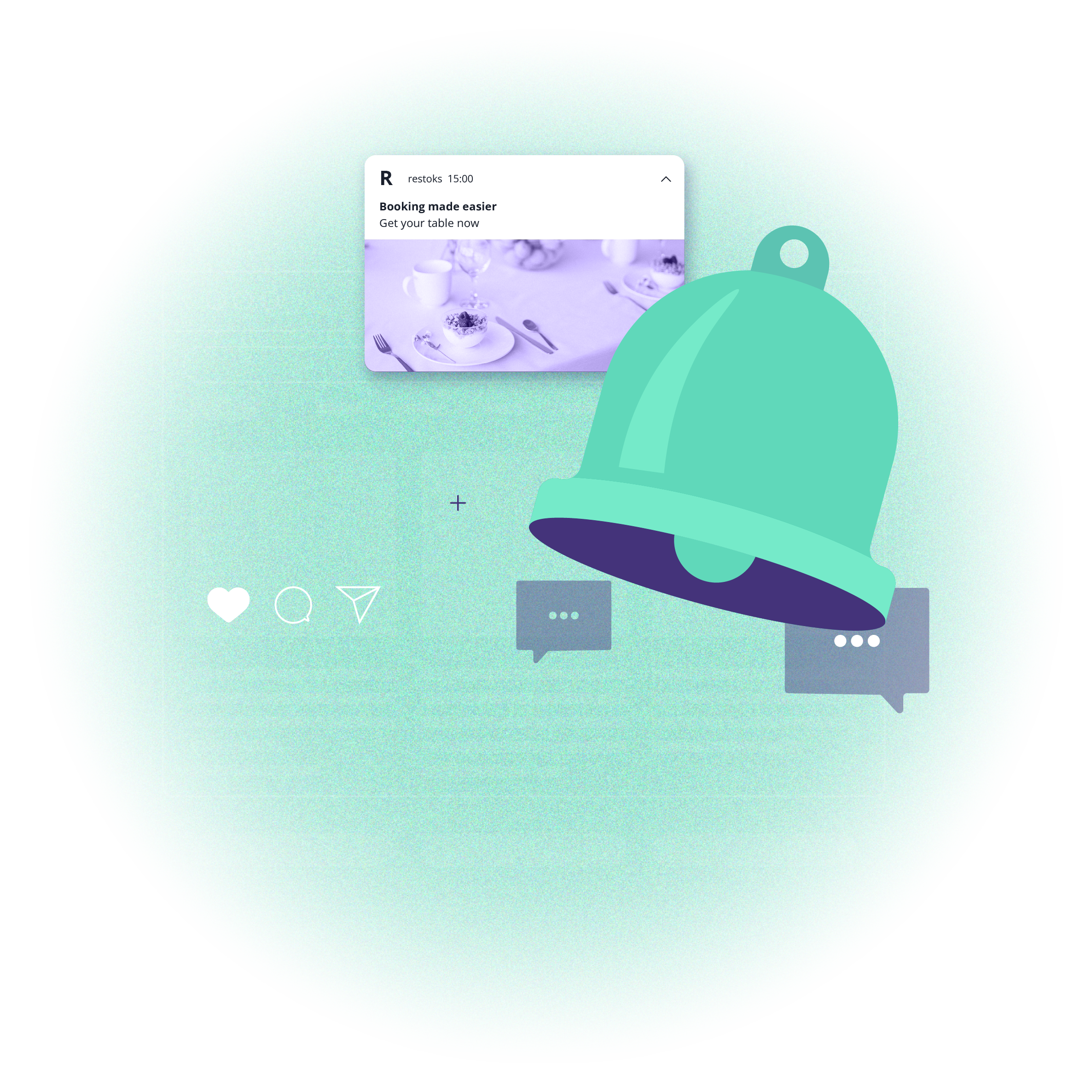The e-commerce subscription model – everything you have to know
 Aleksandra Kozioł
Aleksandra Kozioł
A regular customer is like a holy grail, an ultimate goal for every online store. The more regular customers you have in your database, the more stable your business is, and you can easily scale it. The whole retail industry has been looking for ways to retain customers from the very beginning. One of the latest ways to achieve this goal is the subscription model. What do you need to know about it? What are the benefits of the e-commerce subscription model? And how can you encourage customers to opt for recurring payments? That's what we're going to talk about today.
The subscription model came to retail from the IT world. Have you ever heard about SaaS? That's the perfect example of a product, in this case, an application, that you have to pay for every month. And here's another example–streaming services like Netflix and Amazon Prime. You can't just purchase them; you have to renew your access every month. Without a doubt, this model works brilliantly. SaaS applications are increasingly popular. Estimations are that there are approximately 15,000 software SaaS companies in the United States alone. Together, they have around 14 billion customers worldwide [Statista]. And Netflix alone has a whopping 200+ million subscribers [IGN Southeast Asia].
This raises a vital question: If this model works, why wouldn’t you adopt it to online trade? And, in fact, that’s what has been happening for the past several years.
Subscriptions in the e-commerce industry
In e-commerce, it’s all based on a simple premise: You have to buy some products regularly. And by regularly, we mean at least several times a year. Let’s take a look at some examples that come to mind:
Food
Products for babies
Hygiene products and cosmetics
Cleaning products
Medicines and dietary supplements
Pet food
Contact lenses and their solutions
Underwear
Office and school supplies
If you think about all the products that fit in at least one of these categories, you will end up with a quite impressive list of products that can be sold in the subscription model.
Did you know that, in the United States, there is even a SUBTA association that brings together sellers operating in the subscription model? Earlier this year, they published an annual report about the condition of subscription-based shopping. According to their data, this model experiences impressive growth rates, especially in pet products, beauty products, and food products:

Interestingly, this way of purchasing products is popular among parents working from home during the pandemic:

Additionally, SUBTA’s another research revealed in 2019 found that the e-commerce subscription market experienced annual growth of over 17% in the last five years. Their predictions are that three-quarters of DTC (direct to consumer) brands will offer subscriptions by 2023, while global e-commerce subscriptions will account for almost 18% of the total market share [Scalefast].
The benefits of subscription-based shopping
There are several reasons for the popularity of subscription-based shopping, both for you as a retailer and for your customers. You, as an online store owner, can:
Plan long-term campaigns and projects
Have full control over your inventory (and deal with the dead stock issue)
Optimize supply chains
Enjoy a stable business (just imagine knowing that you make a certain amount of sales each month and you don’t have to worry about your balance at the end of it)
On the other hand, your customers can:
Plan and control their home budgets. Quick side note here: Companies offering subscription purchases usually offer some discounts for a long-term commitment. And a low monthly cost often wins with high one-time purchases.
Make sure they have all the necessary products on time. There is no risk that you will suddenly run out of diapers or shampoo.
Benefit from a 100% safe, convenient, and flexible solution.
Examples of online stores operating in the subscription-based model
Now, we want to show you three examples of online stores that adapted to the subscription model and with great success:
HONEST.COM
Every parent knows perfectly well that diapers and baby care products run out in no time. Honest.com is an American online store that knows that well, too. That’s why for 79.95 USD (now 30% off for the first bundle), customers can get a prepackaged kit of diapers and wipes. Honest.com states that their model enables customers to save 17% on every order. They also offer additional discounts for selected items and free gifts with every third shipment. That’s how you fight for regular customers!

BARKBOX.COM
If you have a pet, you should be interested in their offer. Every month, subscribers get a fully customized box of themed toys and treats for their pups. The monthly subscription (one box) starts at 23 USD, and inside, you will find:
2 toys
2 all-natural bags of treats
A chew, curated from each month's unique themed collection

Barkbox also promises free shipping within 48h (within the continental US). Barkbox brags about serving over 2 million dogs. That's quite a result, isn't it?
HELLOFRESH.COM
Their business model is actually very simple. It's based on a known premise: We all have to eat, but frequently, we don't have enough time to prepare quality food. They offer a meal delivery service that allows you to forget about meal planning and grocery shopping. Their subscribers get pre-portioned ingredients along with step-by-step recipes. Of course, they have a whole list of possible options and exemptions. Users can choose from over 27 weekly recipes. The ready-made set is delivered at the customer's door.

When it comes to the e-commerce subscription model, it’s all about your creativity. Barkbox doesn’t even sell pet food–they just offer toys and treats! And they managed to get about 2 million customers! What does it mean to you?
How to start selling in the subscription-based model
Start with checking your offer. How many of your products do customers buy regularly/frequently? If you have at least several such items in your offer, think about creating product bundles shipped to customers regularly.
In general, you have three options that will allow you to introduce this model in your store. Here they are:
DIRECT DEBIT
You cooperate with customers based on a monthly direct debit. The amount due is automatically collected from the account or credit card, and the customer does not have to take any additional steps. This model is proven and convenient for both parties. Of course, you should give your customers the option to unsubscribe at any time. But if your offer is well-tailored to their needs, they won’t.
LOYALTY PROGRAM
If you have a loyalty program, e.g., in the form of a mobile app, you can use it to encourage customers to buy products regularly. As part of their loyalty programs, online stores reward customers with vouchers and discounts, for example, after reaching a certain order threshold. Your subscription model could be embedded into the loyalty program.
REMINDERS
Granted, this option is a bit less "certain" because it is based on the customer's consent each time. Oftentimes, stores simply remind customers that they may be running out of specific goods and suggest that they should buy them. Such communication usually takes place via email, SMS, or push notifications. And this is where our role begins.
PushPushGo offers push notifications for online stores that want to stay in constant relationship with their customers. You can use these notifications to rescue abandoned charts, inform about new arrivals, or, yes, remind your customers that they are running out of specific products. Such reminders are just based on the amount of time that passed since the last purchase.
Suppose you offer beauty products, and you know that customers, on average, buy shampoos and shower gels once a month. All you have to do is set a reminder about 25 days after the last purchase. Simple, isn't it? Here's what such a notification could look like:

We encourage you to give push notifications a try. This way of communicating with customers is efficient, convenient, and quick. If you have a mobile app, you can embed them into your application. If you don't, just go with the traditional web push that's displayed in the Internet browser.
Sign up now orcontact our team to find out more!

Content Specialist @PushPushGo
Editor and writer. She is interested in media and new technologies.
Try PushPushGo to engage and connect with your audience.
Create an account and start testing!

-it2smaqmcq.webp)



